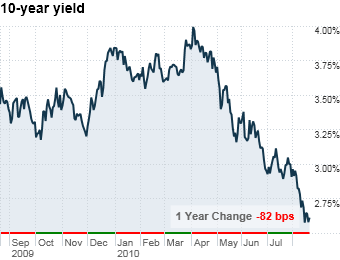
At a time of economic uncertainty, investors want safety. U.S. Treasuries may no longer be viewed as impregnable, but they still inspire more confidence than, say, Greek government bonds.
Why they're worrisome
Why they're worrisome Supply is supposed to bring down prices, but that hasn't happened: U.S. bonds have risen 14% in 2010, even as the government has issued $3.3 trillion in debt over the past two years. "This is the big one," says Doug Noland, senior portfolio manager at the Federated Prudent Bear Fund. "Bubbles happen because there is no restraint on borrowing, and that's exactly the situation we have now for the federal government."
Verdict: not a bubble
The national debt is still a manageable 40% of GDP. Economists warn that growth will slow when it reaches 90% of GDP. The Congressional Budget Office projects it will take nine years to get to that level, and that's if Washington, which is debating the deficit, does nothing.
NEXT: Pure-play shale stocks
Last updated August 23 2010: 2:56 PM ET
